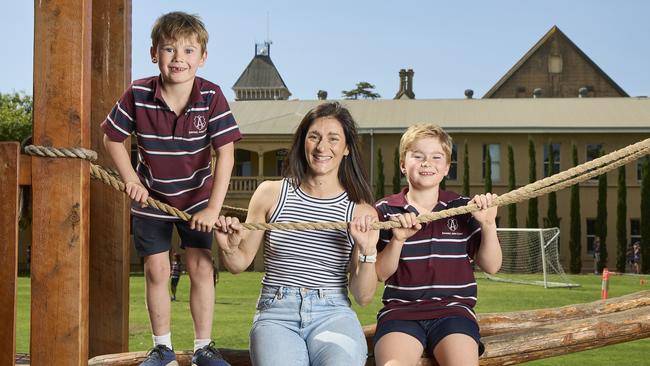South Australia’s fastest growing schools for 2023 revealed: Annesley Junior School tops list
South Australia’s fastest growing – and shrinking – schools have been revealed. See the full list.
SA News
Don't miss out on the headlines from SA News. Followed categories will be added to My News.
South Australia’s fastest growing – and shrinking – schools have been revealed.
Analysis of enrolment figures for every government, independent and Catholic school in the state has uncovered the campuses where student numbers are surging, or falling.
Annesley Junior School in Wayville is the state’s fastest growing school, swelling from 99 students in 2018 to 266 students last year – a jump of 169 per cent.
At the other end of the spectrum the population at public Moorook Primary School plummeted 81 per cent over the same period, to just 7 students in 2022.
It was expected the tiny school would lose even more students so the community agreed to amalgamate with nearby Kingston-on-Murray Primary School at the start of this year.
The analysis is based on enrolment data published on the MySchool website, which provides the most up to date enrolment figures available across all public and private schools.
Year 7 moved into high school last year, which has affected enrolments for schools that aren’t Reception to Year 12.
Sought-after specialist programs, such as the bilingual English-Mandarin program at public Plympton International College, are luring families to top schools.
Elsewhere major reforms, like the joining of Our Lady of Mt Carmel Parish Primary School with Mount Carmel College in 2022, have seen student populations soar.
Mount Carmel College expects demand to continue growing and has submitted plans for expansions to accommodate an extra 150 students by 2025.
Former high-fee, all-girls college, Annesley, had been experiencing declining enrolments from its Early Learning Centre (ELC) through to Year 12, prompting its leadership to make major changes in 2012.
It is now a co-educational junior school offering ELC to Year 6.

Principal Jo Rossiter said a new uniform better enabled students “to be active and play”, class sizes were kept to about 20 students and the curriculum focused more on life skills.
The school population grew again in 2023, to about 300 students, and there is capacity for 400.
“The success of the model that we have now is reflected in the enrolment growth,” Ms Rossiter said.
“We’ve had a lot of success in challenging the norms of what schools have been in the past that don’t necessarily match the world of today.”
Lizzie Bermingham moved her son Henry Bannister from a public school to Annesley when he began Year 2.
Now in Year 4, the nine-year-old has been joined by younger brother Eddie, 7.
“Initially we thought we would save that investment (of paying private school fees) for secondary school but we quickly realised it was so important for the boys to have a really good start to their learning,” said Ms Bermingham, who is an old scholar of Annesley College.

The 41-year-old, of Lower Mitcham, said it had “obviously changed a lot” and was “a really well-resourced small school where kids get lots of support”.
“We’d heard in the local community really positive things about the school and that it was on quite a growth trajectory,” she said.
Flinders University emeritus professor John Halsey, who is a former school principal, said factors “inside the school fence” that could affect enrolment numbers included curriculum offerings, the reputations of teachers, whether a school was inclusive and whether it “pursues high standards”.
“All these factors come together to signal this is a good school,” he said.
“We do know that at sites like a specialist music school or gifted and talented schools, generally speaking, there is greater demand than places available.”
Factors “outside the school gate” could include population fluctuations in regional areas, the closure of large businesses or downsizing of industries or families choosing to relocate, he said.
Education Minister Blair Boyer said enrolments in public schools grew in 2023, for the first time in two years, to 190,498 students.
He said the government had invested $700m since early last year and was “looking at population growth modelling and where capacity needs to be available over the coming years”.
Opposition education spokesman John Gardner said the former Liberal government had undertaken analysis of where demand would grow and invested $1.5bn in infrastructure, including new campuses in the northern, southern eastern suburbs.
More Coverage
Originally published as South Australia’s fastest growing schools for 2023 revealed: Annesley Junior School tops list





